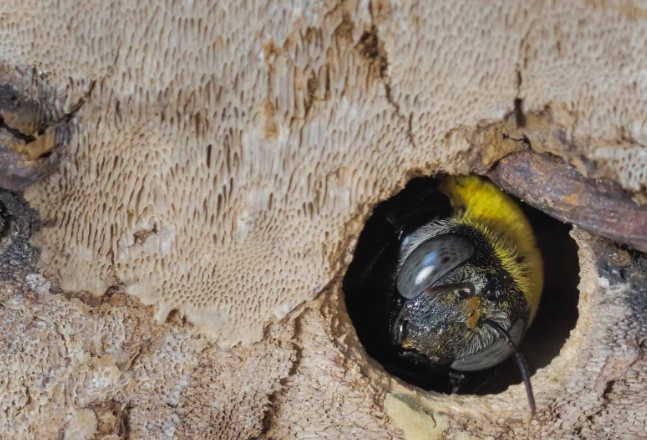Carpenter bees are large solitary bees that get their name from boring into wood. Unlike common bees, carpenter bees are unsocial creatures that do not live in a hive with other carpenter bees. They tend to build individual nests in dead wood, trees, or the frames and eaves of buildings. There are about 500 different species of carpenter bees known to exist.
If you find yourself with carpenter bees boring holes into your home, there are solutions and remedies you can prepare at you own house to combat these pests. Follow these steps to drive out carpenter bees away from your home.
Identify Nest Areas
Take a good look around your home and backyard and note areas where you have noticed carpenter bees nesting or believe could eventually become their habitat. Common areas to look at are the wooden eaves, fascia boards, railings, and siding around your house. Additionally, you can inspect stacked firewood, fence posts, and garden landscape fixtures for other nest areas of carpenter bees.
Choose Insecticides and Applicators
Once you have identified where carpenter bees could be potentially nesting you will need to find the proper insecticides and sprayers to best fit your backyard and the habitat around it. Follow the instructions on the back of the mosquito insecticide to properly prepare the solution for spraying. Additionally, depending on the size of your yard you can choose between various sprayers to apply your chosen pesticide. Backpack sprayers are ideal as they are comfortable to wear for larger properties that have a larger treatment areas.
Apply Pesticides
Once the insecticide is properly mixed and safely added to your sprayer you can begin applying the pesticides around your home. You will want to spray any area that can be susceptible to carpenter bees, especially the places you noted in your Identification Stage.
Reapply Pesticides
Creating a routine to reapply carpenter bee pesticides will help you maintain reduced pest populations around your home. Spraying treatments every 30 days during peak season is a great way to keep pests away.
During your routine spray treatments, it may be possible that you are stung by a carpenter bee. Choosing the proper protective gear such as a bee suit or heavy clothing will help reduce the chances of a carpenter bee sting.
We hope these steps gave you a better understanding of how you can reduce carpenter bee populations around your home.










